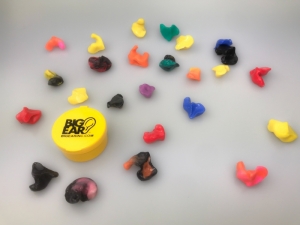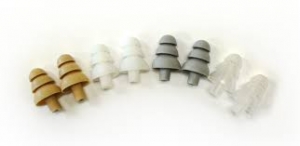Preschoolers are causing noise-induced hearing loss and hyperacusis in teachers researchers have found that Seven out of ten female preschool teachers suffer from Noise-induced auditory fatigue, one out of two has difficulty understanding language along with four out of ten become hypersensitive to noise.

This is a considerably greater share than girls in general and higher than in occupational groups exposed to sound, based on research in Sahlgrenska Academy, Sweden. “We have an occupational group with much higher risk for those signs, and when nothing is done about it, then it is really alarming. We must lower sound levels, have a calmer preschool,” states Sofie Fredriksson, an audiologist with research from the Occupational and Environmental Medicine Department at Sahlgrenska Academy.
In continued work on her dissertation, she has analyzed preschool teachers. The corresponding share in the control group (4,122 girls ) was 32 percent. Within the group, 46 percent, had trouble understanding speech, compared with 26% of the control group. Thirty-nine percent stated at least one time each week they experienced discomfort or bodily pain in their ears out of everyday sounds that aren’t necessarily loud in any way.

The corresponding share with hyperacusis in the management group was 18 percent.
Preschool educators are vulnerable to voices and yells which frequently convey significant information, a communication-intensive sound that’s difficult to screen out. Contrary to a machine in a commercial environment, To protect teachers from these dangerous decibels a compromise must be implemented, Sofie Fredriksson highlights.
It isn’t just about how large the groups of children are, but also about opportunities for good periods spent outdoors and much more. The imidate solution is Custom Hearing Protection Devices.
We have created a solution called “The One.” It is a patented Custom Hearing Protection Ear Plug that is very discrete and made for all day use where you can hear your students perfectly and when there is an instant outbreak you are adequately protected without having to do anything. It is a dual filter that is always working for you, keeping you protected at all times. The main issue is if we don’t learn from this and take a stand now and do something about it today, we will continue to cause more teachers to get hearing damage. This does fall under OSHA regulations, with enough noise about this we can save our upcoming educators.

It is the responsibility of the institutions to make the correct Personal Hearing Protection Devices available to Teachers as they would a factory worker until they can implement better noise control in the schools.
Personal hearing protection that works is available now.
It is the same as being regulated to provide Custom Hearing Protection for the Band Directors and Music Teachers according to this CDC REPORT.
We have the solution we just need help implementing it. Please spread the word and share this.






 Looking back at the graph, we start with awareness. You woke up today with an issue that did not exist yesterday. Now it is up to you to look into your options in correcting the problem. Add it to your to-do list and check the box, so to speak.
Looking back at the graph, we start with awareness. You woke up today with an issue that did not exist yesterday. Now it is up to you to look into your options in correcting the problem. Add it to your to-do list and check the box, so to speak. I’ve spent over 15 years helping hundreds of thousands of people get the exact solution they need. Don’t fall victim to the social media myth that ‘if it’s in print, then it must be true.’ The irony here is that I’m doing just that. Sitting at a computer, writing my story, in order to convince you to spend money on my product. Yet, here is where I differ. I want to help you uncover the truth and find the perfect solution to your problem. We want to pick up the phone and talk with you or meet you at a convention and listen. I don’t want to sell you anything until I hear YOUR story.
I’ve spent over 15 years helping hundreds of thousands of people get the exact solution they need. Don’t fall victim to the social media myth that ‘if it’s in print, then it must be true.’ The irony here is that I’m doing just that. Sitting at a computer, writing my story, in order to convince you to spend money on my product. Yet, here is where I differ. I want to help you uncover the truth and find the perfect solution to your problem. We want to pick up the phone and talk with you or meet you at a convention and listen. I don’t want to sell you anything until I hear YOUR story. Solid full stop earplugs come in a variety of styles, material, and have various NRRs (Noise Reduction Ratings). You can choose from wax, soft vinyl, heat, and molds, do it yourself styles, and more.
Solid full stop earplugs come in a variety of styles, material, and have various NRRs (Noise Reduction Ratings). You can choose from wax, soft vinyl, heat, and molds, do it yourself styles, and more. Custom Ear Plugs are available in any of the 3 categories. (Beware here that there are many companies that offer a material that you mix, heat up or just jam in the ear bowl). They say they are custom but they have a generic end on them and THIS is not Custom Ear Plugs as there is no seal down in the ear canal. It looks lit it might do something but it doesn’t, Read the NRR ratings, most are not certified or even have any data, just claims.
Custom Ear Plugs are available in any of the 3 categories. (Beware here that there are many companies that offer a material that you mix, heat up or just jam in the ear bowl). They say they are custom but they have a generic end on them and THIS is not Custom Ear Plugs as there is no seal down in the ear canal. It looks lit it might do something but it doesn’t, Read the NRR ratings, most are not certified or even have any data, just claims. The final step is where you become the fisherman who eats for a lifetime. If you’ve gotten this far, you may want to share your experience. You’re aware of the problem, you’ve researched to find the best earplug available, you’ve made your purchase, and now understand why Custom Ear Plugs are best. It’s human nature to want to share with others so you become an advocate for hearing loss prevention. Tell your story and see where it takes you.
The final step is where you become the fisherman who eats for a lifetime. If you’ve gotten this far, you may want to share your experience. You’re aware of the problem, you’ve researched to find the best earplug available, you’ve made your purchase, and now understand why Custom Ear Plugs are best. It’s human nature to want to share with others so you become an advocate for hearing loss prevention. Tell your story and see where it takes you. So take the time to do your research and have a conversation with me. I’ve stood on the fields of marching bands and taken readings. We’ve been at bike rallies and tested the sound levels. Putting myself in the shoes of my customers in order to find the solution to their exact needs. Take a look at my competitors, and tell me if they’ve done the same, look at the guarantees and certifications. I promise you, they haven’t.
So take the time to do your research and have a conversation with me. I’ve stood on the fields of marching bands and taken readings. We’ve been at bike rallies and tested the sound levels. Putting myself in the shoes of my customers in order to find the solution to their exact needs. Take a look at my competitors, and tell me if they’ve done the same, look at the guarantees and certifications. I promise you, they haven’t.











 Hearing Loss In Factory Workers
Hearing Loss In Factory Workers